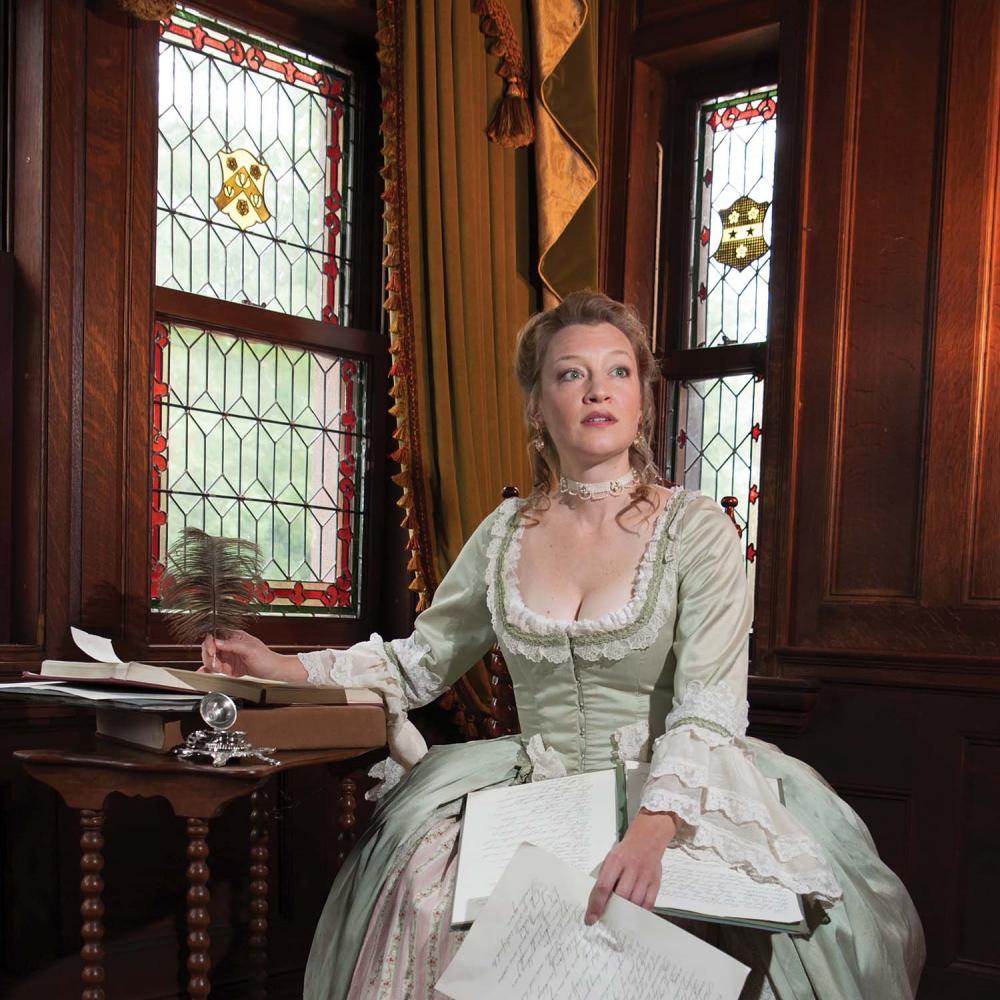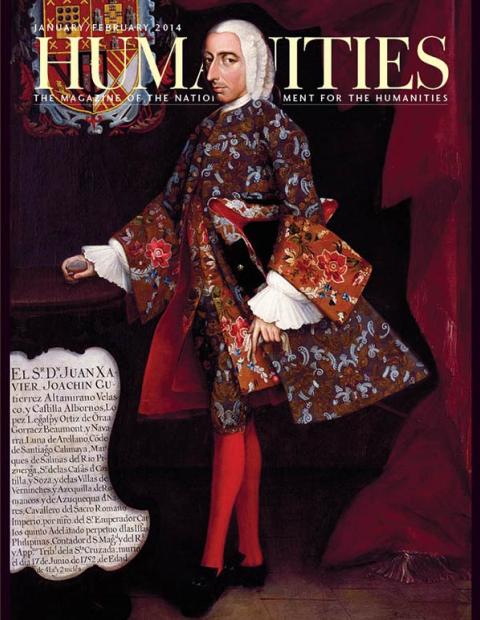Émilie du Châtelet had an extraordinary mind. Her monumental achievements in math and science are testament to a singular intelligence that, though celebrated during her life in eighteenth-century France, seem to have been marginalized in mainstream histories because Châtelet was a woman.
As portrayed in Lauren Gunderson’s 2009 play Emilie: La Marquise Du Châtelet Defends Her Life Tonight, Châtelet had the benefit of being born during the Age of Enlightenment. Her father was Louis Nicolas le Tonnelier de Breteuil, a nobleman who was a secretary to Louis XIV. Besides being so precocious as to entice her older brothers’ tutors to teach her instead, she was also exposed to the thinkers and scientists who visited her father’s weekly salon. At age ten, she was studying astronomy with Bernard le Bovier de Fontenelle, who was the secretary of the French Academy of Sciences for four decades, and by twelve she was fluent in German, Greek, Italian, and Latin.
As the play opens, Châtelet, who died in 1749 at age forty-two—a week after the birth of her fourth child—has been given the chance to return, in a quasi-spiritual form, to make the case for her achievements as a mathematician and physicist. Foremost among them was her translation, from Latin into French, and commentary on Isaac Newton’s Principia Mathematica. During her career she also examined the nature of fire and predicted infrared energy, wrote a physics primer, explained kinetic energy, developed an early form of financial derivatives, and offered considerations on the Bible and happiness.
As depicted by Gunderson, Châtelet has a zest for life equal to her thirst for knowledge. Married by arrangement before she was eighteen to a minor nobleman a dozen years her senior, who was away at war for long stretches, Châtelet enthusiastically pursued discreet romances, including a lengthy one with the writer Voltaire. Theirs was an epic affair, its intellectual battles as intense as its sexual passion. Gunderson’s stage directions specify that one side of the set be scrawled in chalk with Châtelet’s mathematical equations; on the opposite wall is a small blackboard with columns for “Love” and “Philosophy,” where, while telling the story of her life, Châtelet totes up points for each side as they’re achieved.
Châtelet was an iconoclast and among the conventions she challenged were those limiting the life choices of women. In the play, she is alternately supported and vexed by Voltaire. While he admired and respected her, Voltaire personified the difficulties of her career and acceptance from the scientific community with backhanded compliments, calling her, “that lady whom I look upon as a great man” and, elsewhere, “a great man whose only fault was being a woman.” It seems that such attitudes spurred Châtelet’s championing education for women.
It was this latter advocacy, combined with Châtelet’s extraordinary life and Gunderson’s telling of it, that led Kristen van Ginhoven, artistic director of WAM Theatre in Pittsfield, Massachusetts, to select Emilie for her ensemble’s fall 2013 production. (The company’s acronym is short for Women’s Action Movement.) A professional theater troupe launched in January 2010, WAM promotes theater that focuses on female artists and stories about women.
“The fact that everyone knows about Voltaire . . . and people don’t know about how monumental Châtelet was in the physics and mathematics world is really fascinating,” says van Ginhoven. “If this woman, at this time, could accomplish these things, then we can accomplish so much—given how much we have in the world that we live in now.”
WAM raised $30,000 for the production, including $10,000 from Mass Humanities. The grant supported production of a study guide for Emilie and the opportunity for girls and young women from five organizations in WAM’s region to see the play and explore its themes through a social-media campaign and pre- and postshow discussions at special student performances.
During a talkback with audience members following a November performance, van Ginhoven described a conversation she and cast members had earlier in the run with an audience of teenaged girls. When she asked whether any of the girls felt, like Châtelet, that they faced significant obstacles to pursuing math and science, all said no.
But they found it astonishing that a play as captivating as Emilie had yet to be produced in New York City though it premiered on the West Coast four years ago. WAM’s production was the Northeast regional premiere.
“That brings up another kind of glass ceiling, doesn’t it?” van Ginhoven asked the postshow audience. “[Gunderson] is a brilliant playwright—she wrote Emilie when she was only twenty-eight—but she’s having a hard time getting her work out there. Does that sound something like what we were just watching?”


